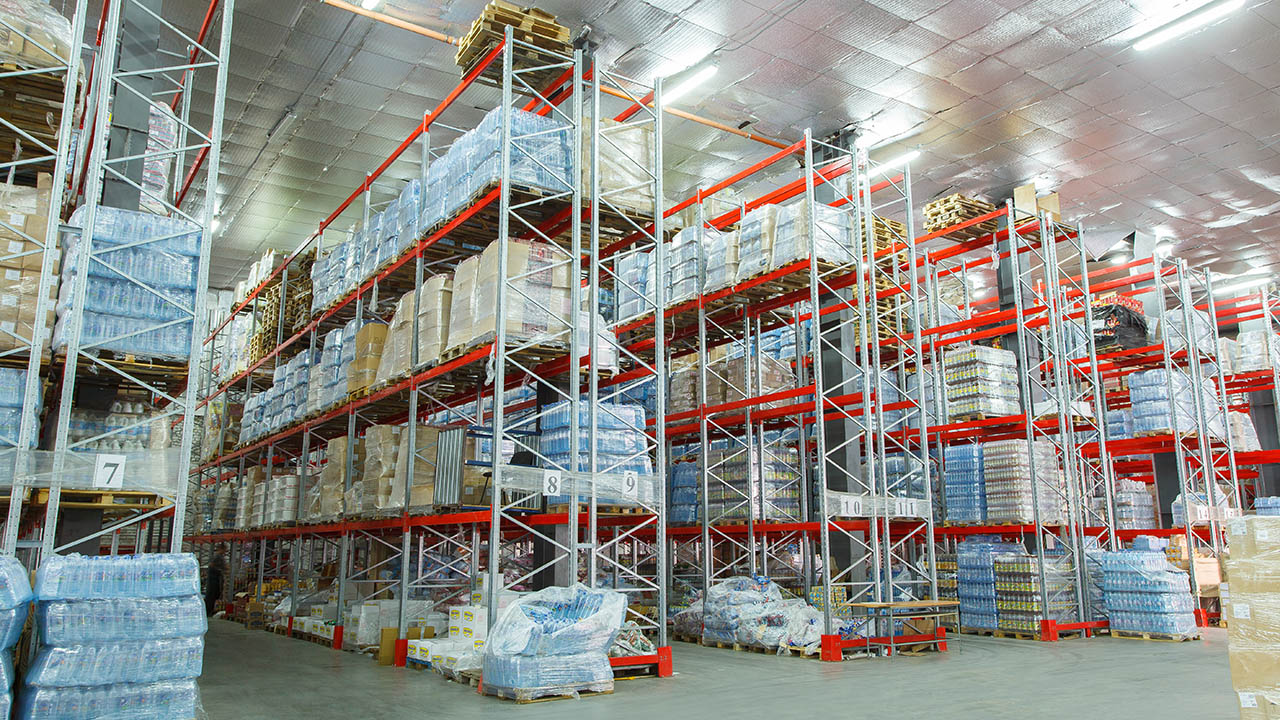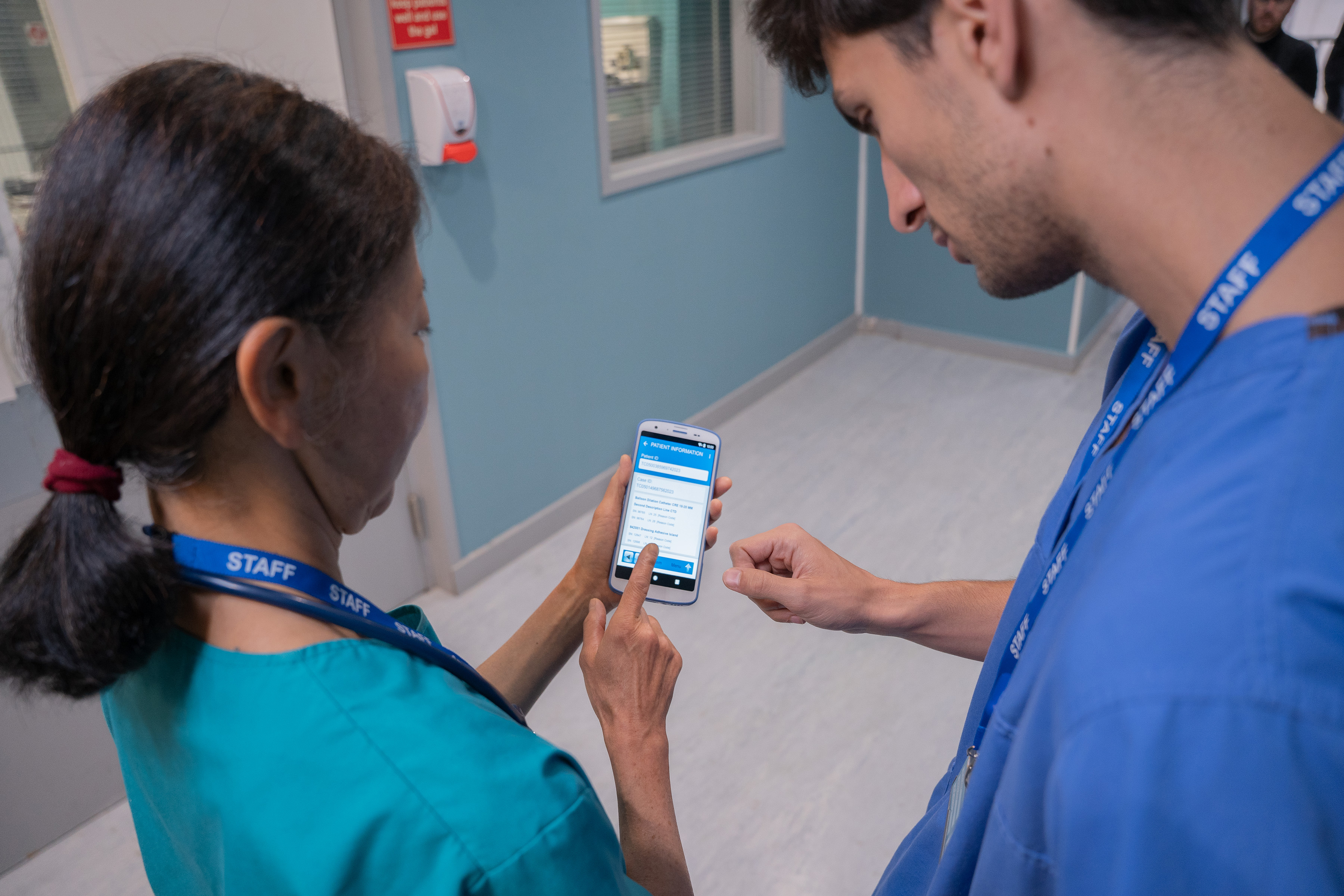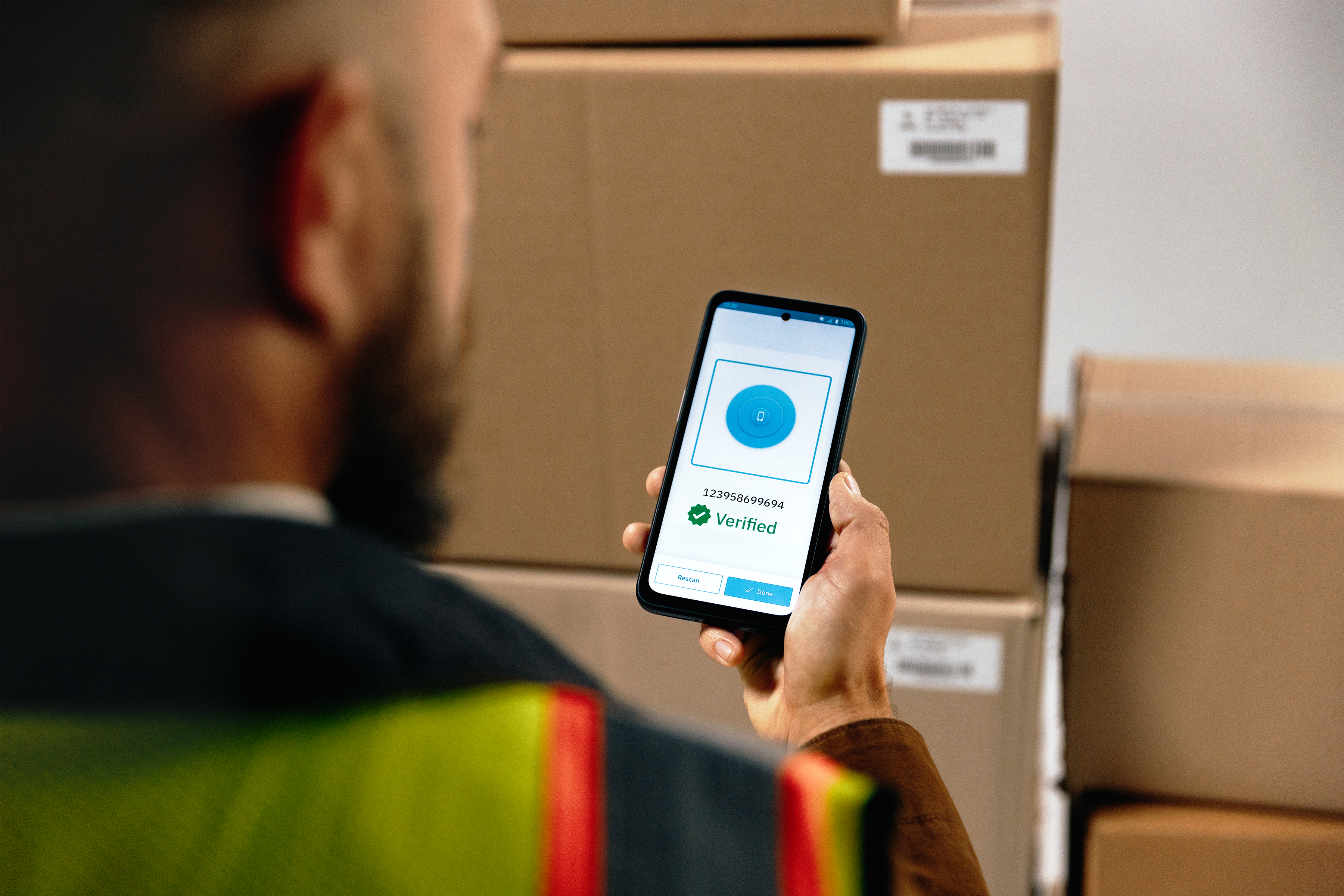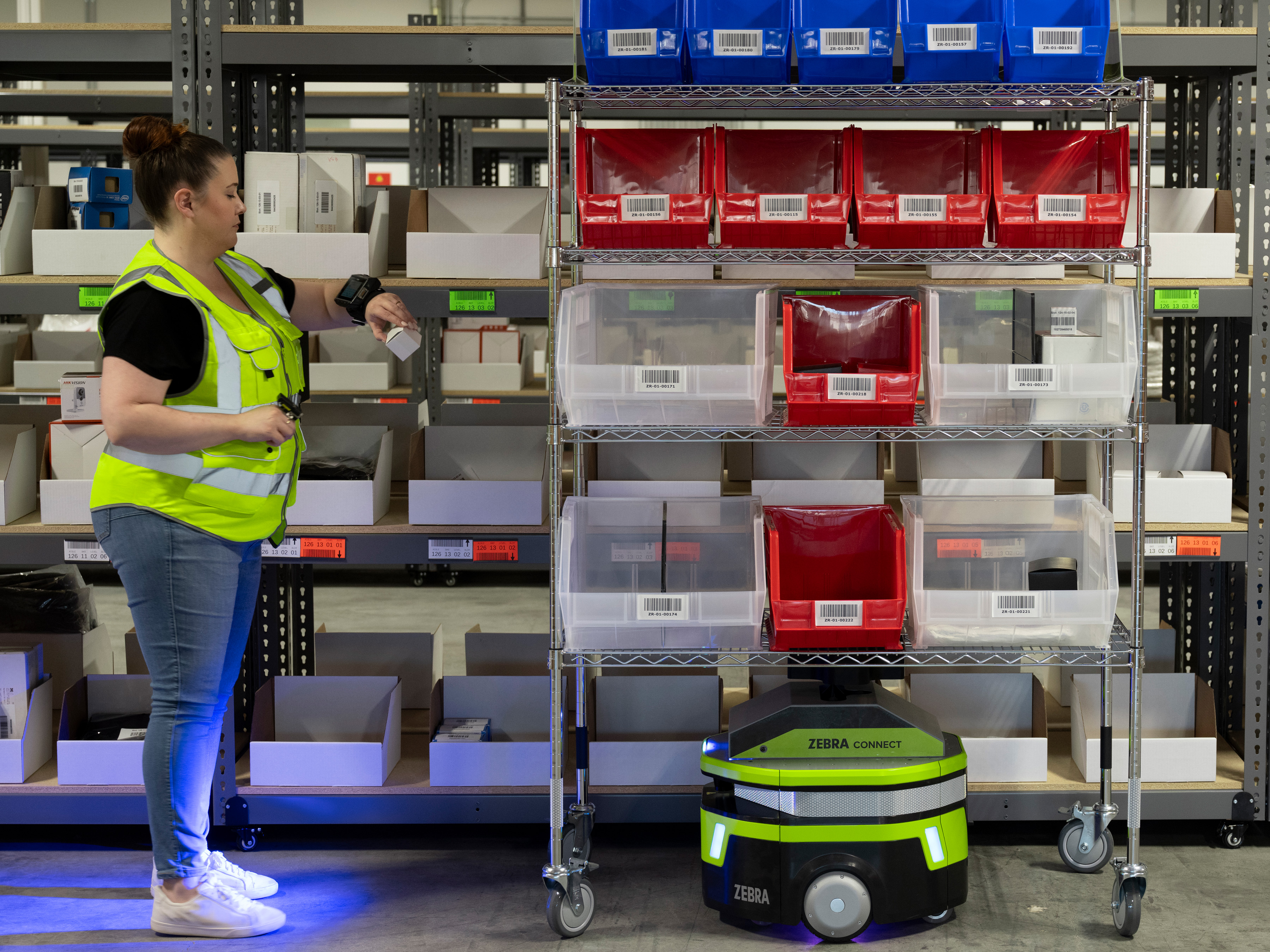Transform retail operations with Zebra’s retail technology solutions, featuring hardware and software for improving inventory management and empowering teams.
Streamline operations with Zebra’s healthcare technology solutions, featuring hardware and software to improve staff collaboration and optimise workflows.
Enhance processes with Zebra’s manufacturing technology solutions, featuring hardware and software for automation, data analysis, and factory connectivity.
Zebra’s transportation and logistics technology solutions feature hardware and software for enhancing route planning, visibility, and automating processes.
Technology is a key enabler in helping the Public Sector provide their frontline and back office workers automate business process and assets with a digital voice.
Zebra's hospitality technology solutions equip your hotel and restaurant staff to deliver superior customer and guest service through inventory tracking and more.
Zebra's market-leading solutions and products improve customer satisfaction with a lower cost per interaction by keeping service representatives connected with colleagues, customers, management and the tools they use to satisfy customers across the supply chain.
Empower your field workers with purpose-driven mobile technology solutions to help them capture and share critical data in any environment.
Zebra's range of mobile computers equip your workforce with the devices they need from handhelds and tablets to wearables and vehicle-mounted computers.
Zebra's desktop, mobile, industrial, and portable printers for barcode labels, receipts, RFID tags and cards give you smarter ways to track and manage assets.
Zebra's 1D and 2D corded and cordless barcode scanners anticipate any scanning challenge in a variety of environments, whether retail, healthcare, T&L or manufacturing.
Zebra's extensive range of RAIN RFID readers, antennas, and printers give you consistent and accurate tracking.
Choose Zebra's reliable barcode, RFID and card supplies carefully selected to ensure high performance, print quality, durability and readability.
Zebra's location technologies provide real-time tracking for your organisation to better manage and optimise your critical assets and create more efficient workflows.
Zebra's rugged tablets and 2-in-1 laptops are thin and lightweight, yet rugged to work wherever you do on familiar and easy-to-use Windows or Android OS.
With Zebra's family of fixed industrial scanners and machine vision technologies, you can tailor your solutions to your environment and applications.
Zebra’s line of kiosks can meet any self-service or digital signage need, from checking prices and stock on an in-aisle store kiosk to fully-featured kiosks that can be deployed on the wall, counter, desktop or floor in a retail store, hotel, airport check-in gate, physician’s office, local government office and more.
Discover Zebra’s range of accessories from chargers, communication cables to cases to help you customise your mobile device for optimal efficiency.
Zebra's environmental sensors monitor temperature-sensitive products, offering data insights on environmental conditions across industry applications.
Enhance frontline operations with Zebra’s AI software solutions, which optimize workflows, streamline processes, and simplify tasks for improved business outcomes.
Zebra Workcloud, enterprise software solutions boost efficiency, cut costs, improve inventory management, simplify communication and optimize resources.
Keep labour costs low, your talent happy and your organisation compliant. Create an agile operation that can navigate unexpected schedule changes and customer demand to drive sales, satisfy customers and improve your bottom line.
Empower the front line with prioritised task notification and enhanced communication capabilities for easier collaboration and more efficient task execution.
Get full visibility of your inventory and automatically pinpoint leaks across all channels.
Reduce uncertainty when you anticipate market volatility. Predict, plan and stay agile to align inventory with shifting demand.
Drive down costs while driving up employee, security, and network performance with software designed to enhance Zebra's wireless infrastructure and mobile solutions.
Explore Zebra’s printer software to integrate, manage and monitor printers easily, maximising IT resources and minimising down time.
Make the most of every stage of your scanning journey from deployment to optimisation. Zebra's barcode scanner software lets you keep devices current and adapt them to your business needs for a stronger ROI across the full lifecycle.
RFID development, demonstration and production software and utilities help you build and manage your RFID deployments more efficiently.
RFID development, demonstration and production software and utilities help you build and manage your RFID deployments more efficiently.
Zebra DNA is the industry’s broadest suite of enterprise software that delivers an ideal experience for all during the entire lifetime of every Zebra device.
Advance your digital transformation and execute your strategic plans with the help of the right location and tracking technology.
The Zebra Aurora suite of machine vision software enables users to solve their track-and-trace, vision inspection and industrial automation needs.
Zebra Aurora Focus brings a new level of simplicity to controlling enterprise-wide manufacturing and logistics automation solutions. With this powerful interface, it’s easy to set up, deploy and run Zebra’s Fixed Industrial Scanners and Machine Vision Smart Cameras, eliminating the need for different tools and reducing training and deployment time.
Aurora Imaging Library™, formerly Matrox Imaging Library, machine-vision software development kit (SDK) has a deep collection of tools for image capture, processing, analysis, annotation, display, and archiving. Code-level customisation starts here.
Aurora Design Assistant™, formerly Matrox Design Assistant, integrated development environment (IDE) is a flowchart-based platform for building machine vision applications, with templates to speed up development and bring solutions online quicker.
Designed for experienced programmers proficient in vision applications, Aurora Vision Library provides the same sophisticated functionality as our Aurora Vision Studio software but presented in programming language.
Aurora Vision Studio, an image processing software for machine & computer vision engineers, allows quick creation, integration & monitoring of powerful OEM vision applications.
Adding innovative tech is critical to your success, but it can be complex and disruptive. Professional Services help you accelerate adoption, and maximise productivity without affecting your workflows, business processes and finances.
Zebra's Managed Service delivers worry-free device management to ensure ultimate uptime for your Zebra Mobile Computers and Printers via dedicated experts.
Find ways you can contact Zebra Technologies’ Support, including Email and Chat, ask a technical question or initiate a Repair Request.
Zebra's Circular Economy Program helps you manage today’s challenges and plan for tomorrow with smart solutions that are good for your budget and the environment.

Balancing Retail Orders in Times of Shortage Can Be as Simple As “An Extension”
You have the foresight to expect your retail customers’ orders are going to take a hit – now what?

Recently I had a conversation with a leading supply chain executive at a major CPG company on the effect of supply chain disruptions on their business. While not verbatim, what she told me was:
“A disruption in our manufacturing supply chain has delayed new inventory allocations by a month, and my current inventory is not likely to stretch to meet the anticipated inbound orders from two of our largest retail customers. One has a stiff on-time, in-full (OTIF) penalty, but the other was recently a new customer win for Sales. Add into this the uneven flow of orders from a few smaller storefronts. We need a better option for reacting to these new developments—other than just following the Available To Promise (ATP) plan issued last quarter.”
While Chief Supply Chain Officers are busy grappling with broad structural changes needed for more supply chain resiliency, fulfillment teams are often stuck with the challenge of how to manage through the disruption in the here-and-now. CPG brands should likewise investigate new solutions for the better performance at end of the chain, and here’s why…
Supply chain disruptions are costly and likely to continue happening.
From semi-conductors to nitrogen fertilizer, we are all feeling the rippling effect of supply chain disruptions in the form of shortages and rising prices. While the pandemic was undoubtedly the primary driver of supply chain disruption over the past two years, most retailers and CPG firms are coming to the realization that the global economic uncertainties causing inventory shortages are likely part of a new normal.
Looking back at 2021, high-profile disruptions included the February freeze in Texas, the lengthy Ever Given blockage in the Suez Canal, the pandemic-induced Yantian port shutdown in China, a Union Pacific service suspension, and Category 4 Hurricane Ida in New Orleans—just to name a few. Already in 2022, worldwide ripples from the conflict in the Ukraine have only further unsettled our global economy.
CPG firms are now proactively examining the risk categories that can contribute to supply chain shortages, such as too much manufacturing dependency on single locations and supplier or shipping industry consolidations that limit pricing leverage. Yesterday’s “just-in-time” approach to inventory management is shifting to “just-in-case” to adjust for these risks.
But looking for someone else to bear the costs of disruption doesn’t fix the problem.
For retailers, imposing the OTIF penalties and service level agreements (SLA) during supply shortages that were initially created to improve supply reliability during normal operations can result in a reactive increase in prices by the supplier. Often passed on to the final consumer, these sudden price hikes are likely to impact consumer demand, hurting everyone. And even with these penalties in place, U.S. retailers still suffered empty shelves, costing them $82 billion in missed sales last year.
For CPG brands, on the other side, price increases or simplistic “first come, first serve” responses to supply shortages can rapidly damage valuable retail customer relationships. A survey of retail buyers found that 73% of respondents have ended vendor relationships over delivery issues. In addition, the loss of trust that develops because of supply shortages and irregularities can cause retailers to overstock further and sooner. This contributes to what is known as the “bullwhip effect,” in which changes in demand at the retail level can progressively cause larger movements in demand that impact wholesalers, distributors, and manufacturers. The result distorts demand forecasts which lengthens the delivery queue—a slippery slope that might not be easy to correct.
Supply chain overhaul can take a long time. What can CPG brands do in the near term?
1. Use a sophisticated ATP solution
ATP and order promising systems that normally take 3-4 months to recalibrate can’t help fulfillment managers make immediate decisions about inventory in volatile supply conditions. Without better direction, warehouse managers will resort to “first come, first serve” fulfillment, putting major customer relationships in jeopardy while increasing the risk of OTIF penalties.
There is an alternative to this situation: intelligent order promising (IOP). In short, you can apply sophisticated algorithms about near-term consumption sensing data, guided by pre-determined strategic business objectives and customer segmentation, to produce allocation recommendations across all channels. These recommendations in turn help guide decisions that lead to optimized business performance — mitigating sudden gaps between demand and supply. IOP has been shown to improve case fill rate by 4-5% for customers pre-identified as strategic, delivering a 10x return on investment (ROI) from both increased revenues and reduced OTIF penalties.
2. Share visibility on fulfillment decision strategy
IOP guides the development of pre-determined strategies to address unexpected challenges of supply disruption. Different strategies and their impacts can be shared with employees, customers and investors in a way that develops trust through transparency. It also delivers the power of machine learning to those responsible for final decisions—delivering easy-to-follow guidance driven by flexible business rules for different business conditions. IOP helps fulfillment teams see through the noise and confusion of short-term demand volatility and react quickly by automating the prioritization of orders while considering multiple strategic objectives.
3. Leverage additional data and demand sources
Order history and retail shipments aren’t sufficient to anticipate retail orders. In these volatile times, CPG companies will be caught flat-footed when changes occur. By leveraging additional data sources and demand sources such as weather, events, and consumption data, you will be able to significantly improve your forecast accuracy. Thus, your team and supply chain partners can prepare for expected changes and mitigate inventory shortages before they occur.
To sum it up: IOP is proving to be an ideal solution for those trying to navigate the new norm of unexpected supply chain disruptions. But like most things, there’s more to the story. This time, it’s more good news…
IOP is a real-time extension to demand forecasting that introduces risk-based modeling into the mix so allocations can be better calculated based on fill-rate, fill-rate target, and customer priority and you can receive early warning when future fill-rate risks are identified. Additionally, IOP produces optimal inventory assignment recommendations upfront, based on hierarchical segmentation, thereby eliminating that outdated, cumbersome and inefficient “first come, first serve” mindset.
So, if you want to get past this reactionary stance you’ve been in for the past two years, be proactive in making a change. See the “alternative option” as the solution. Because the systems that were used to mitigate and solve inventory problems in the past aren’t doing either today.
###
Editor’s Note:
If you’d like to learn more about intelligent order promising, this is a good place to start.

Parth Thakker
Parth Thakker leads the antuit.ai global sales team for Zebra. Parth has more than 15 years of experience generating value for retailers, manufacturers, and consumer products companies.
Previously, he served as Sales Executive for the Manufacturing vertical at Genpact, where he partnered with a portfolio of aerospace and industrial firms. Parth holds an MBA from the Stern School of Business at New York University and a Bachelor's and Master's in Engineering from Stevens Institute of Technology.
Zebra Developer Blog
Zebra Developer Blog
Are you a Zebra Developer? Find more technical discussions on our Developer Portal blog.
Zebra Story Hub
Zebra Story Hub
Looking for more expert insights? Visit the Zebra Story Hub for more interviews, news, and industry trend analysis.
Search the Blog
Search the Blog
Use the below link to search all of our blog posts.
Most Recent
Legal Terms of Use Privacy Policy Supply Chain Transparency
ZEBRA and the stylized Zebra head are trademarks of Zebra Technologies Corp., registered in many jurisdictions worldwide. All other trademarks are the property of their respective owners. ©2025 Zebra Technologies Corp. and/or its affiliates.






